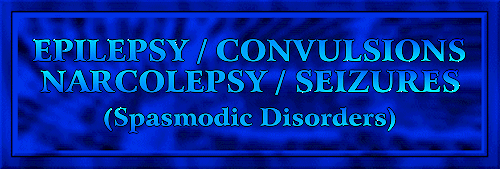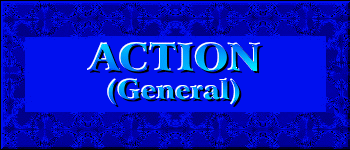


Ingredients
Traditionally Used to Alleviate

![]()


Bee Pollen
Black Cohosh Root (Cimicifuga
racemosa)
Blue Vervain
(Verbena hastata)
Catnip (Nepeta cataria)
Cayenne (Capsicum frutescens)
Chamomile Flowers (Matricaria chamomilla)
Chinese Ginseng Root (Panax schinseng)
Cramp Bark (Viburnum opulus)
Lavender Flowers (Lavandula vera)
Linden Flowers (Tilia europaea)
Rosemary Leaves (Rosmarinus officinalis)
Scullcap (Scutellaria lateriflora)
Valerian Root (Valeriana officinalis)
Wood Betony (Stachys betonica)


Echinacea Root (Echinacea angustifolia)
Ginger Root (Zingiber officinale)
Hyssop (Hyssopus officinalis)
Juniper Berries (Juniperus communis)
Licorice Root (Glycyrrhiza glabra)
Marjoram (Origanum marjorana)
Mugwort (Artemesia vulgaris)
Passion Flower (Passiflora incarnata)
Sage Leaves (Salvia officinalis)
Wild Yam Root (Dioscorea villosa)


(Epilepsy) Sense of
persecution; rejection of life; a feeling of great struggle;
self-violence; desire not to grow up; refusing to face and learn
from present conditions; emotional overload.
(Muscles) Represent
our ability to move in life.
(Muscular System) Resistance
to new experiences; straining or forcing, due to holding on to
unproductive thoughts; the need to understand how the mind causes
the body to function; retarding of actions on one's mental
creations; refusal to be honest with the Self regarding one's
strength or capability to cause motion and change.
(Narcolepsy) Extreme
fear; cannot cope; wanting to get away from it all; not wanting
to be here; denial of one's stimulation to learn; desire to
escape, based upon information that is being received without the
willingness to understand.
(Parasites) Giving
power to others; letting them take over; stealing from others.
(Seizures) Running
away from the family, from the Self, or from life; attempt to
separate one's Self from an emotional overload from others and
emotional conditions around the Self; denial of events that are
occurring in one's life; intentional withdrawal of one's
attention from the physical experiences or from stimuli being
received, causing a misfiring in the brain.
(Sleeping Disorder) Need to
release the problems in one's life.


(Epilepsy) I choose to
see life as eternal and joyous. I am eternal and joyous and at
peace. I realize my fun begins when I grow up. I have much more
freedom because I am able to respond to my desires.
(Muscles) I
experience life as a joyous dance.
(Muscular System) I begin the
practice of meditation, concentration, memory enhancement, dream
interpretation, visualization, and healing as tools for
understanding my mind. I begin to create my imagined desires.
(Narcolepsy) I rely upon
Divine wisdom and guidance to protect me at all times. I am safe.
I banish fear by identifying my worst fears. I identify and
fulfill my greatest desires in order to make my fears vanish
forever.
(Parasites) I lovingly
take back my power and eliminate all interference. What is
stolen, I will lose. What I earn for my inner Self, I will gain
forever.
(Seizures) I am at
home in the universe. I am safe and secure and completely
understood. The power in correctly identifying the events and
circumstances in my life is apparent when I begin to change my
life for the better, due to my increased awareness.
(Sleeping Disorder) I remove my
attention from tomorrow's troubles before going to sleep. I place
my thoughts on pleasant ideas and events.


Base ingredients consist of natural herbal botanicsls that
assist in alleviating multiple forms of epilepsy or epileptic
seizures, such as (1) abdominal (paroxysmal abdominal pain, due
to the expression of an abnormal neuronal discharge from the
brain), (2) acquired (due to cerebral disease acquired after
birth), (3) cortical (seizures that originate in the cerebral
cortex), (4) diurnal (epileptic attacks occurring during the
daytime, or when the patient is fully awake), (5) focal (minor
epileptic seizures that are predominantly one-sided or local, or
that present localized features), (6) grand mal (sudden loss of
consciousness immediately followed by generalized convulsions,
and frequently preceded by an aura), (7) hysterical (seizures
associated with hysteria, which may mimic the symptoms of
epilepsy), (8) idiopathic (of unknown origin, but possibly
associated with some inherited predisposition for seizures), (9)
menstrual (epileptic seizures associated with menstruation), (10)
minor (slight epileptic attacks consisting of brief impairment or
loss of consciousness, or localized motor or sensory symptoms),
(11) nocturnal (epileptic attacks occurring at night or while the
patient is asleep), (12) petit mal (sudden momentary loss of
consciousness with only minor myoclonic jerks, especially in
children), (13) reflex (epileptic seizures occurring in response
to a tactile, visual, auditory or musical stimulus), (14) sleep
or narcolepsy (marked by an uncontrollable desire for sleep, or
by sudden attacks of sleep occurring at intervals) and (15)
symptomatic (acquired epileptic seizures caused by central
nervous system disorders, a generalized systemic imbalance or
poisoning); or convulsions such as (1) central (due to a lesion
of the central nervous system, and not excited by any external
cause), (2) clonic (marked by alternating contracting and
relaxing of the muscles), (3) epileptiform (attended with loss of
consciousness), (4) hysterical (attendant upon a hysterical
disorder), (5) local (minor spasms that affect only one muscle or
part), (6) mimetic or mimic (facial spasm or tic), (7) puerperal
(involuntary spasms in women just before, during, or just after
childbirth), (8) tetanic (tonic spasm without any loss of
consciousness), (9) tonic (prolonged contraction of the muscles,
due to an epileptic discharge) and (10) uremic (due to uremia, or
retention of material in the blood that should have been expelled
by the kidneys); as well as various other spasmodic disorders.


The specific medical properties, physiological action and
therapeutic uses for each of the primary and secondary
ingredients in this formula (as described in The
Professional's Herbal Formula Handbook No. 25) can
be viewed by selecting the appropriate active links from the list
of ingredients above.
A complete 101-page copy of The Professional's Herbal Formula Handbook No. 25 for this particular formula is also available from us (see our complete listing of Handbooks).
![]()

![]()
![]()
Herbal Formulas
Adults and Teenagers
15 to 30 drops every 4 hours (acute
conditions), or
15 to 30 drops every 2 hours (chronic conditions), or 15 to 30
drops every hour (terminal conditions), or
as directed by your doctor.
Children (1 to 12 years)
5 to 10 drops every 4 hours (acute
conditions), or
5 to 10 drops every 2 hours (chronic conditions), or
5 to 10 drops every hour (terminal conditions), or
as directed by your doctor.
Children (under 1 year)
3 to 5 drops every 4 hours (acute
conditions), or
3 to 5 drops every 2 hours (chronic conditions), or
3 to 5 drops every hour (terminal conditions), or
as directed by your doctor.
(Note: 15 drops is equivalent to 1/2 dropperful)
The best times to ingest these formulas each day (acute conditions only): (1) Upon awakening, (2) around noon, (3) late afternoon or before the evening meal, and (4) before bedtime.
![]()
All of our herbal formulas are consistently manufactured under strict laboratory supervision, using only the freshest and finest ingredients possible. All alcohol employed during the manufacture of the 70 Professional Herbal Formulas has been removed by the laboratory, and natural vegetable glycerin has been added as a preservative. Each of the 1-ounce bottles of the herbal formulas will provide an approximate 12-day supply, while the 2-ounce bottles will usually last 24 days when using the recommended dosage for acute conditions.
![]()